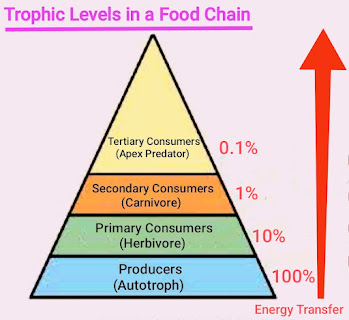Lecture 2 Ecological Relationship
Effect on two organisms because of living together. There are following possible ecological relationship exist
- Mutualism(+, +)- When two organisms interact in such a way that both get benefited by each other's niches.
- Commensalism(+, 0)- When an organism benefits from other organism without affecting the other organism
- Antagonism(+, -)- When one organism takes advantage of another and negatively affect it. Predation and parasitism are example of antagonism.
- Neutralism(0, 0)- No benefit and no harm because of interaction
- Amensalism(0, -)- One organism get negatively affected without any affect on another organism.
- Competition(-, -)- When two organisms compete and both get negatively affected.
Gause's Competitive Exclusion Principle- Two species that compete for the same resources cannot coexist stably.
Resource Partition- Phenomenon where two or more species compete for the same resources including food and space, and divide them out to coexist.
Ecological Facilitation(Probiosis)- Species interactions that benefit at least one of the participants and cause harm to neither one. ex- mutualism and commensalism.
Ecological Relation Based on Duration
Short Term Interaction- Interaction last for short duration but effect can last longer. Ex- Predation, pollination
Long Term Interaction(Symbiosis)- Interaction last for long term. Symbiosis can be mutualism, commensalism, parasitism, neutralism, amensalism, and competition.
- Ectosymbiosis- When one organism lives on the surface of another organism.
- Endosymbiosis- When one organism lives inside the body of another organism.
Food Relationship and Trophic Levels
Food Chain- Linear representation of food consumption order from producer(Autotroph) to final heigher level consumer.
Food Web- Feeding relationships among species within a community. A food web comprises more than 1 numbers of food chain.Trophic Level- Position an organism occupies in a food web. The trophic level of an organism is the number of steps it is from the start of the food chain.
Different Tropic levels-
- Trophic Level 1- Primary producers such as plants
- Trophic Level 2- Herbivores
- Trophic Level 3- Carnivores
- Trophic Level 4/5- Apex predators
Ecological Pyramid
Each trophic level absorb some energy(Roughly 10%) from lower trophic level except trophic level 1(primary producers) which produce energy directly from sunlight. This relation is depicted by energy pyramid(as shown in above Pyramid).
Shapes of Pyramid
Ecological Pyramid(Trophic Pyramid/Eltonian Pyramid/Energy Pyramid/Food Pyramid)- Graphical representation to show the relationship of biomass or bioproductivity at each trophic level in an ecosystem. Ecological pyramids begin with producers(Trophic level 1) at the bottom and Apex predator at the top.
There are three types of ecological pyramids-
1. Pyramid of Number- Depicts the relationship of total number of organism at different trophic level.
Possible Shapes- Upright, Inverted and Spindle shape
2. Pyramid of Biomass- Depicts the relationship of total biomass at different trophic level.
Aquatic ecosystem- Inverted, Terrestrial- Upright
3. Pyramid of Energy/Productivity- Depicts the relationship of energy transmission at different trophic level. It's always upright.
Lindemann’s energy flow model- Only 10% of the total energy is transferred to the successive trophic levels and creating the biomass. Thus pyramid of energy is always upright.
Limitation of Ecological Pyramid-
- Some organisms such as fungi and microorganisms have not been given specific roles in the pyramids despite the fact that they play a vital role in the ecosystem
- These existing pyramids are only applicable to simple food chains.
- No consideration of variations in seasons and climates
- Same species can occupy different trophic levels at the same time




Comments
Post a Comment